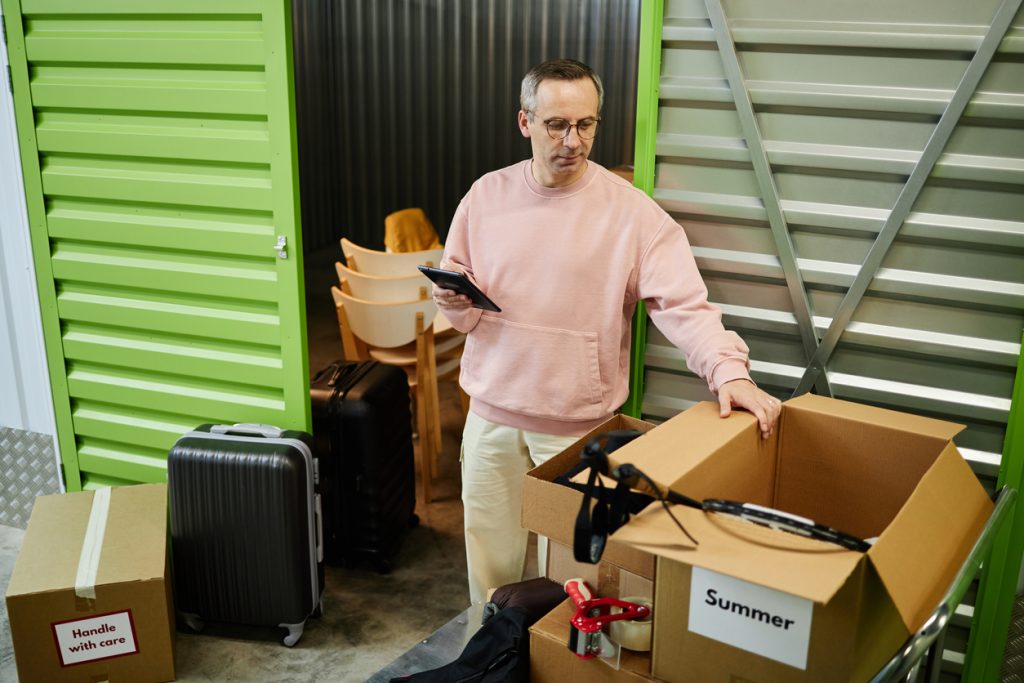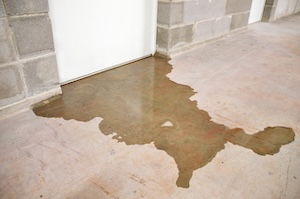Moving house can come with its stressful moments. Finding ways to alleviate can make a big difference to the overall process. One way you can make the moving house journey easier is to rent out a self storage unit. This will allow you to organise your belongings and have a place to store large items or furniture whilst you are getting everything settled.
In this article, we’re going to take a look at the storage unit size that is perfect for your move. It’s the simple way to make sure that you have everything in order and that you never wind up paying for more than you need.
Key Takeaways
- Hiring a storage unit can help you get organised and make the move much less stressful
- A good rule of thumb is to budget 50 sq ft of storage space for each bedroom in your home
- Our moving house checklist will help make sure that you have everything taken care of when it’s time to move

What To Look For In A Storage Unit
Before we start measuring up, you need to make sure that the storage facility you are looking at is fit for purpose:
- Are the units sealed against the elements so that your valuables will remain in perfect condition?
- Is there any climate control if you need it for valuables, fabrics, textiles, and wooden items?
- Are the premises fully alarmed and monitored by 24/7 CCTV and on-site security?
- Are there any access restrictions that you need to be aware of?
Once you have the answers to these key questions, you’re ready to measure up and select the right unit from those on offer.
How Big Should Your Storage Unit Be?
Choosing the right storage unit size is all about being practical and realistic. Larger units with more facilities and functionality will cost more, while smaller, lower-cost units may force you to compromise on what you store. There is a balance to be struck here, and figuring out approximately how much floor space you will need based on the size of your home is the best way to get started:
- 1-Bedroom Flats: 50 sq ft is generally sufficient for a single-bedroom property or studio apartment
- 2-Bedroom Home: Opting for a 75–100 sq ft unit will ensure you have enough room for everything you need to store
- 3-Bedroom House: A 100–150 sq ft unit will work well, unless you have a large amount of bulky furniture. If you have a lot of larger items, upgrading to a 200 sq ft would be advised
- 4-Bedroom House: A family home of this size will generally require a 175–225 sq ft storage unit
If you have a larger property, scaling up using the rule of thumb that each bedroom adds 50 sq ft is a good starting point. Likewise, if you have an excess of large furniture and bulky appliances, adding another 50 sq ft would be a good idea.
Tips On Choosing The Right Size Storage Unit
The nature of moving home means that it’s not practical to measure up every single item that you want to store. It’s also the case that you may not want to use the largest possible storage unit purely for the sake of it. With this in mind, we’ve created a quick list of tips on how to choose the right size:
- Create an inventory: Making a list of the biggest, bulkiest items you want to store is a good starting point and will allow you to estimate how much space will be left available. A quick measurement of furniture and appliances will help here
- Group items into categories: If you’re storing books and clothes, it’s impractical to measure each one. Try to picture them in a large pile and then estimate the size of the pile so you can gauge how much space you will need
- Build a centre aisle: An aisle down the middle of the unit will help you to easily check on the condition of your items and to make sure that you can access them without having to pull everything out
- Leave space for airflow: If you suspect you’re right on the limit of what you can physically fit into a unit, go one size higher. This will provide you with room to move and will give the air room to circulate, so that issues don’t arise
- Plan for future expansion: Having around 10% of the space free will help you to access your items one by one and will give you some flexibility if you need to change things during your move
It’s also helpful to know when the most popular time to move home is, because this will tell you how busy the storage facility may be as moving home is one of the most popular times to use self storage.
Anything Else You Need To Know?
The storage facility you use will be insured as a building, but it will not have insurance in place to cover the items you store. Although you may have contents insurance to cover your possessions, this only applies when they are in your home. You’re now putting them in a different location, so your contents insurance will not cover them anymore.
Taking out specialist storage insurance is the smart approach to take and will allow you to move home with added peace of mind. You will find that your storage facility will ask you if you have insurance and will often want to sell you their own insurance. This is often the more expensive option as going direct can mean overpaying by 900%.








